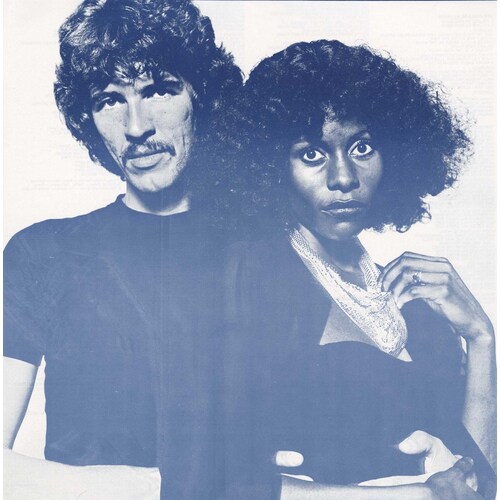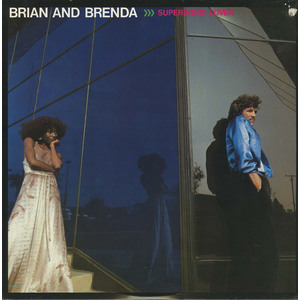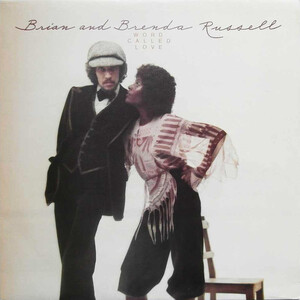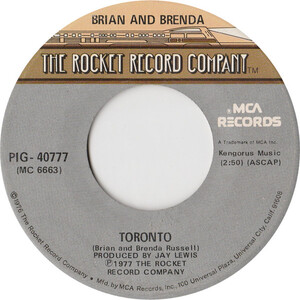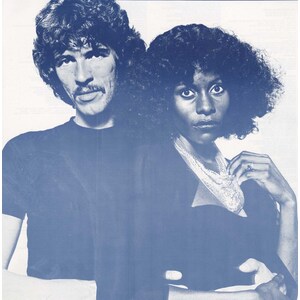Russell, Brian and Brenda
Websites:
https://www.brendarussell.com/
Origin:
Falkirk, Scotland, UK → Toronto, Ontario, 🇨🇦 → Los Angeles, CA, 🇺🇸 (Brian Russell); New York, NY, 🇺🇸 → Hamilton → Toronto, Ontario, 🇨🇦 → Los Angeles, CA, 🇺🇸 (Brenda Russell)
Biography:
Brian Russell was born in Falkirk, Scotland, the son of Reverend Henry Russell. He moved to Toronto, Canada around 1960, and by the late 1960s had become a prominent singer on Canadian television.
He was a featured performer on CBC’s Good Company (1968–1969) and a member of The Ray Stevens Show Singers. He later became a regular on The Music Machine, where he met future wife Brenda Gordon, later known as Brenda Russell.
The two married and joined Dr. Music, a Canadian jazz-pop ensemble led by Doug Riley, before relocating to Los Angeles in 1973. There, they worked as session vocalists and were signed by Elton John to his label, The Rocket Record Company.
As Brian & Brenda, they released:
World Called Love (1976)
Supersonic Lover (1977)
They also sang backup on Elton John’s historic 1975 Wembley Stadium concert, and appear on Robert Palmer’s album Double Fun (1978).
Brian and Brenda divorced in the late 1970s. Brian later married actress Cheryl Ladd (Charlie’s Angels) in 1981.
Not to be confused with:
Brian Winston Russell (born in Calcutta, India), guitarist and arranger.
Brenda Russell is a Grammy-nominated singer, songwriter, and composer whose career has spanned over five decades and bridged genres from pop and soul to jazz and Broadway. Known for her sophisticated songwriting, warm alto voice, and crossover appeal, she has written and recorded timeless songs that continue to resonate around the world.
Born Brenda Gordon in Brooklyn, New York, she was raised in both Brooklyn and Hamilton, Ontario, where she moved at age 12. Her father, Gus Gordon, was once a member of the legendary vocal group The Ink Spots. Brenda’s early musical exposure was grounded in jazz, gospel, and pop, and by her teens, she was performing with local bands in southern Ontario.
She joined the Toronto-based girl group The Tiaras in the 1960s alongside Jackie Richardson, Colina Phillips, and Arlene Trotman. The group released the highly collectible single “Foolish Girl” b/w “Surprise!”, now regarded as one of the rarest and most valuable Canadian girl group records of its era.
Brenda’s early career included a starring role in the Toronto production of Hair, where she first began playing piano and writing songs. She later performed regularly on CBC television as part of the variety program Music Machine, where she met her future husband Brian Russell (born in Falkirk, Scotland). The two joined the jazz-pop ensemble Dr. Music before relocating to Los Angeles in 1973.
As Brian & Brenda Russell, the duo signed with Elton John’s Rocket Record Company and released two albums: World Called Love (1976) and Supersonic Lover (1977). They also appeared as backing vocalists on Elton John’s historic Wembley Stadium concert in 1975 and contributed vocals to Robert Palmer’s album Double Fun. Their daughter Lindsay was born in 1977, shortly before the couple divorced.
Brenda launched her solo career in earnest with the 1979 release of her self-titled debut Brenda Russell on A&M Records, featuring the radio hit “So Good, So Right.” The album showcased her emerging style: an elegant fusion of soul, jazz, and adult pop. It also included the original version of “If Only for One Night”, later a major hit for Luther Vandross.
Subsequent albums included Love Life (1981), Two Eyes (1983), and her landmark 1988 release Get Here, which yielded the Grammy-nominated hit “Piano in the Dark” (featuring Joe Esposito). The title track “Get Here” became a global anthem in 1991 when recorded by Oleta Adams, and has since been covered by numerous artists, including Paul Anka.
Throughout the 1990s and 2000s, Brenda’s output included Kiss Me With the Wind (1990), Soul Talkin’ (1993), Paris Rain (2000), and Between the Sun and the Moon (2004), recorded in both the U.S. and the UK with collaborators including Bluey (Incognito), Lee Ritenour, and Patti Austin.
Brenda’s songs have been recorded by a vast array of artists including Sting, Ray Charles, Joe Cocker, Roberta Flack, Michael McDonald, Donna Summer, Mary J. Blige, Earth, Wind & Fire, Al Jarreau, Babyface, and Janet Jackson. Sting’s recording of her song “She Walks This Earth” (co-written with Ivan Lins) won a Grammy Award for Best Pop Male Vocal Performance in 2001.
In 2005, Brenda made a stunning debut on Broadway as one of the three composers (alongside Allee Willis and Stephen Bray) of the musical adaptation of The Color Purple, produced by Oprah Winfrey. The show was nominated for Tony and Grammy Awards, with a successful revival in 2015 winning the Tony for Best Musical Revival. The musical’s score blended gospel, blues, jazz, and soul with modern pop elements, reflecting Brenda’s signature ability to transcend genre.
Reflecting on her creative process, Brenda has said:
“You’re not doing this alone. You are just a channel for this... Once I realized that, I was fearless about songwriting. I thought: ‘If that’s the way it is, I can write anything.’”
In 2006, she performed for the first time in South Africa, where she was greeted by thousands of fans singing along to her songs. “I am a citizen of the world,” she later said. “Peace and love to all people — that’s what I write about and what I sing about.”
Brenda Russell remains an enduring and powerful voice in music — a rare artist whose work is both emotionally intimate and universally resonant.
-Robert Williston
